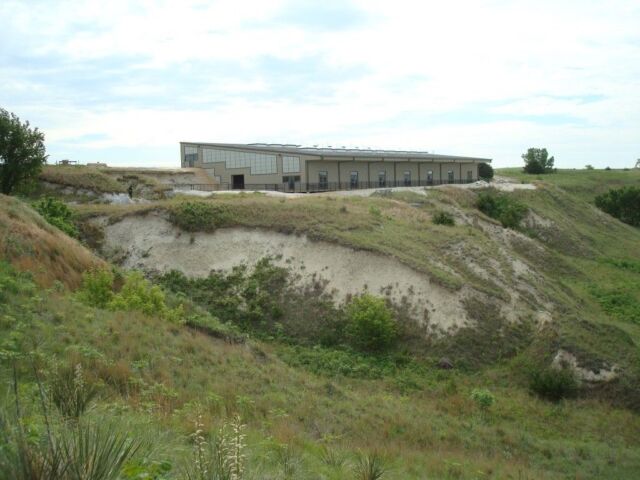The Yellowstone supervolcano destroyed an ecosystem but saved it for us

Rick E. Otto, University of Nebraska State Museum
Death was everywhere. Animal corpses littered the landscape and were mired in the local waterhole as ash swept around everything in its path. For some, death happened quickly; for others, it was slow and painful.
This was the scene in the aftermath of a supervolcanic eruption in Idaho, approximately 1,600 kilometers (900 miles) away. It was an eruption so powerful that it obliterated the volcano itself, leaving a crater 80 kilometers (50 miles) wide and spewing clouds of ash that the wind carried over long distances, killing almost everything that inhaled it. This was particularly true here, in this location in Nebraska, where animals large and small succumbed to the eruption’s deadly emissions.
Eventually, all traces of this horrific event were buried; life continued, evolved, and changed. That’s why, millions of years later in the summer of 1971, Michael Voorhies was able to enjoy another delightful day of exploring.
Finding rhinos
He was, as he had been each summer between academic years, creating a geologic map of his hometown in Nebraska. This meant going from farm to farm and asking if he could walk through the property to survey the rocks and look for fossils. “I’m basically just a kid at heart, and being a paleontologist in the summer was my idea of heaven,” Voorhies, now retired from the University of Georgia, told Ars.
What caught his eye on one particular farm was a layer of volcanic ash—something treasured by geologists and paleontologists, who use it to get the age of deposits. But as he got closer, he also noticed exposed bone. “Finding what was obviously a lower jaw which was still attached to the skull, now that was really quite interesting!” he said. “Mostly what you find are isolated bones and teeth.”
That skull belonged to a juvenile rhino. Voorhies and some of his students returned to the site to dig further, uncovering the rest of the rhino’s completely articulated remains (meaning the bones of its skeleton were connected as they would be in life). More digging produced the intact skeletons of another five or six rhinos. That was enough to get National Geographic funding for a massive excavation that took place between 1978 and 1979. Crews amassed, among numerous other animals, the remarkable total of 70 complete rhino skeletons.
To put this into perspective, most fossil sites—even spectacular locations preserving multiple animals—are composed primarily of disarticulated skeletons, puzzle pieces that paleontologists painstakingly put back together. Here, however, was something no other site had ever before produced: vast numbers of complete skeletons preserved where they died.
Realizing there was still more yet to uncover, Voorhies and others appealed to the larger Nebraska community to help preserve the area. Thanks to hard work and substantial local donations, the Ashfall Fossil Beds park opened to the public in 1991, staffed by two full-time employees.
Fossils discovered are now left in situ, meaning they remain exposed exactly where they are found, protected by a massive structure called the Hubbard Rhino Barn. Excavations are conducted within the barn at a much slower and steadier pace than those in the ’70s due in large part to the small, rotating number of seasonal employees—mostly college students—who excavate further each summer.

Photos by Rick E. Otto, University of Nebraska State Museum
A full ecosystem
Almost 50 years of excavation and research have unveiled the story of a catastrophic event and its aftermath, which took place in a Nebraska that nobody would recognize—one where species like rhinoceros, camels, and saber-toothed deer were a common sight.
But to understand that story, we have to set the stage. The area we know today as Ashfall Fossil Beds was actually a waterhole during the Miocene, one frequented by a diversity of animals. We know this because there are fossils of those animals in a layer of sand at the very bottom of the waterhole, a layer that was not impacted by the supervolcanic eruption.
Rick Otto was one of the students who excavated fossils in 1978. He became Ashfall’s superintendent in 1991 and retired in late 2023. “There were animals dying a natural death around the Ashfall waterhole before the volcanic ash storm took place,” Otto told Ars, which explains the fossils found in that sand. After being scavenged, their bodies may have been trampled by some of the megafauna visiting the waterhole, which would have “worked those bones into the sand.”
Source link





